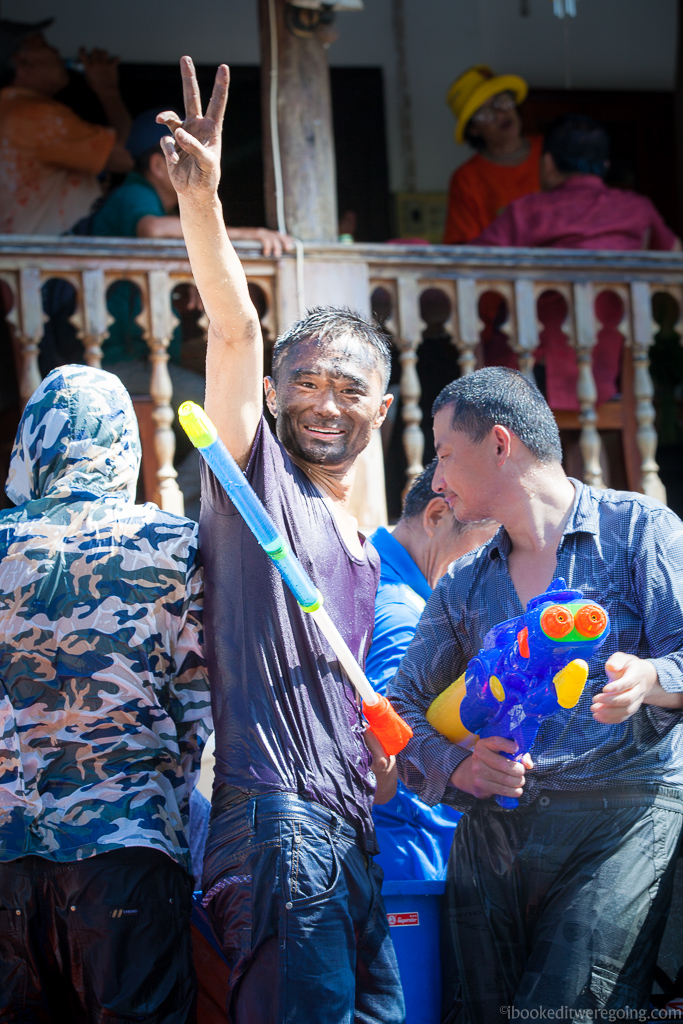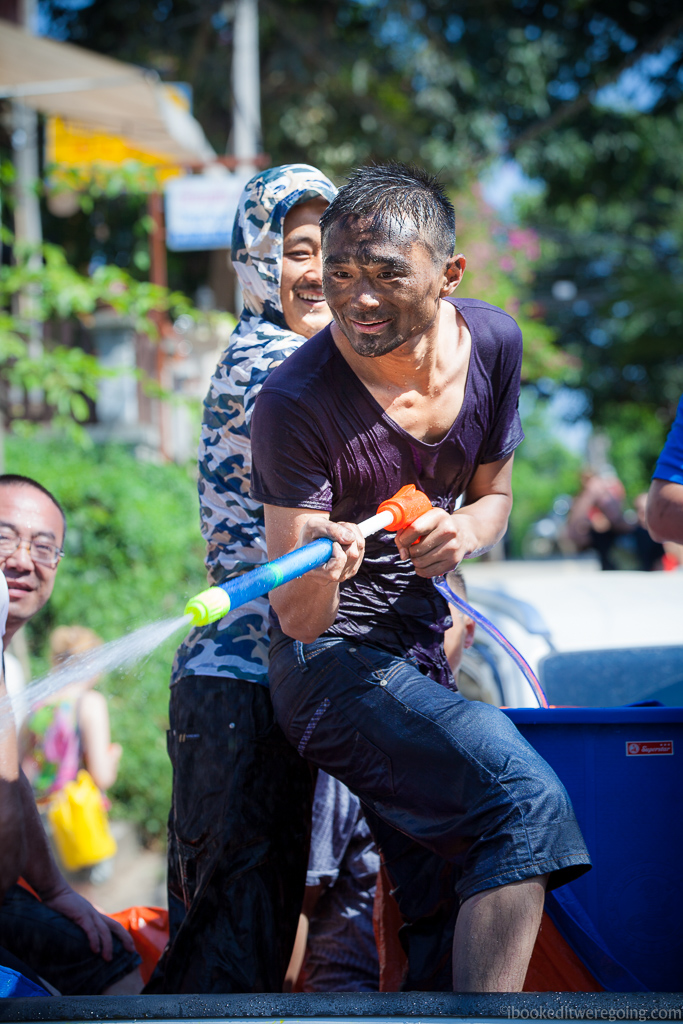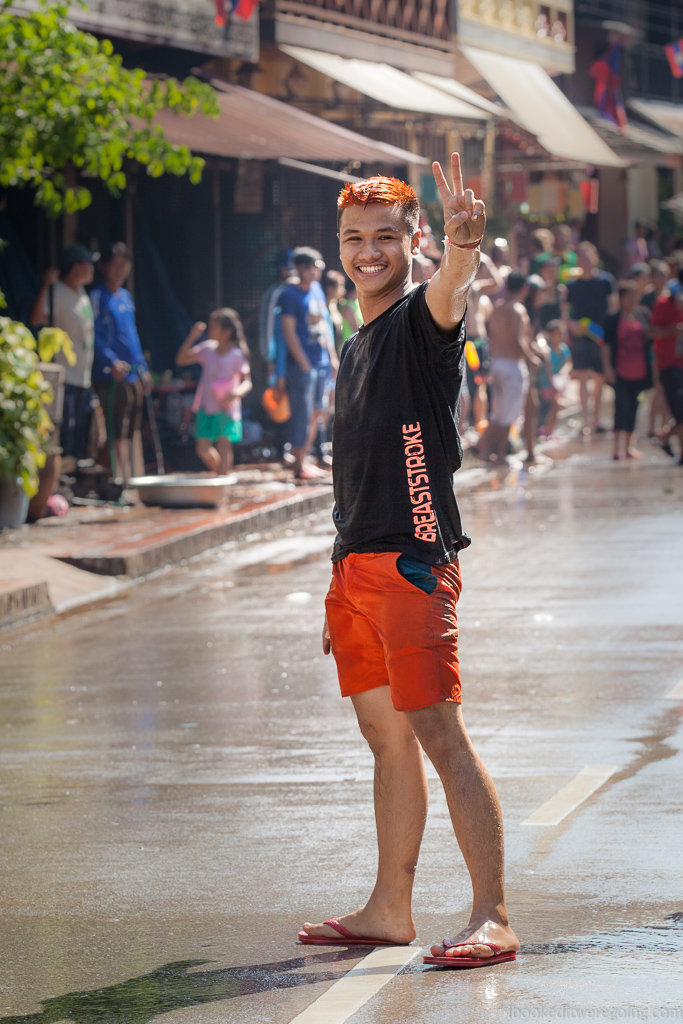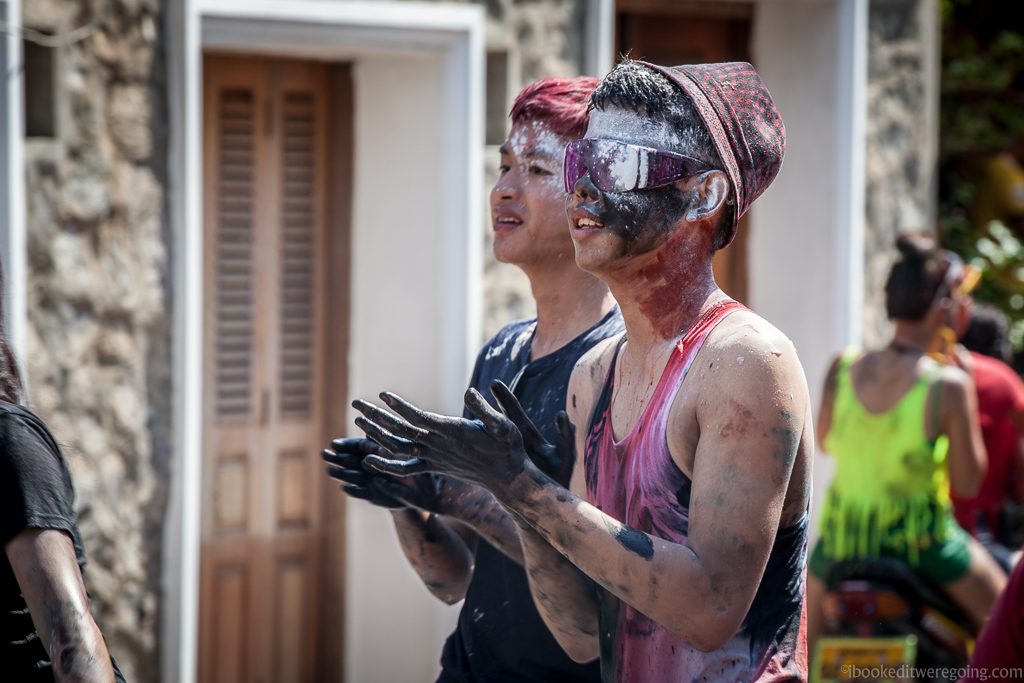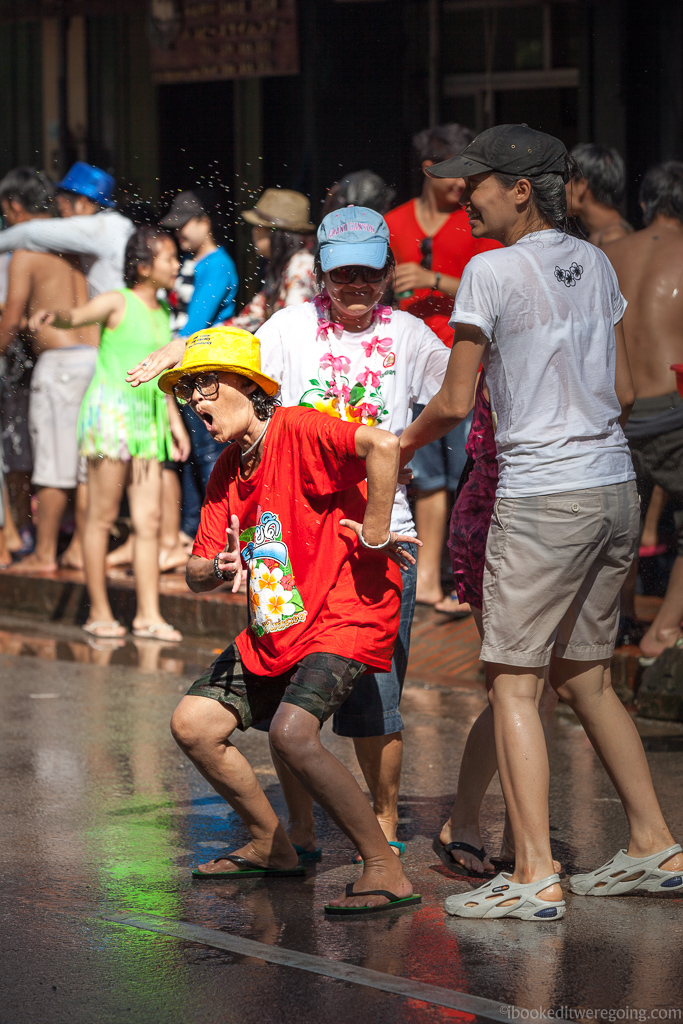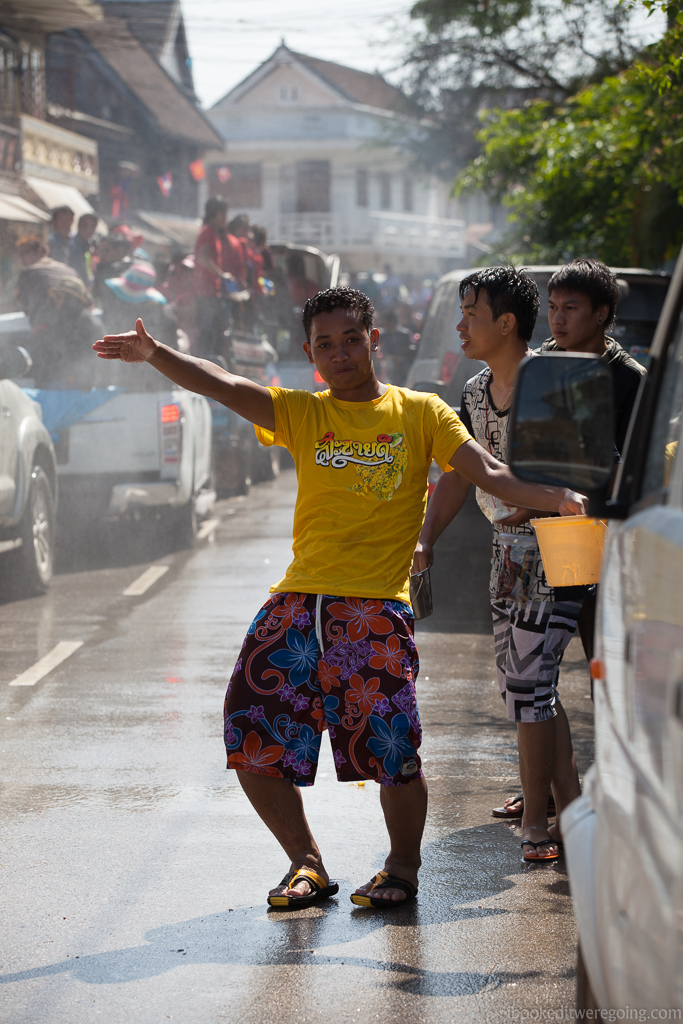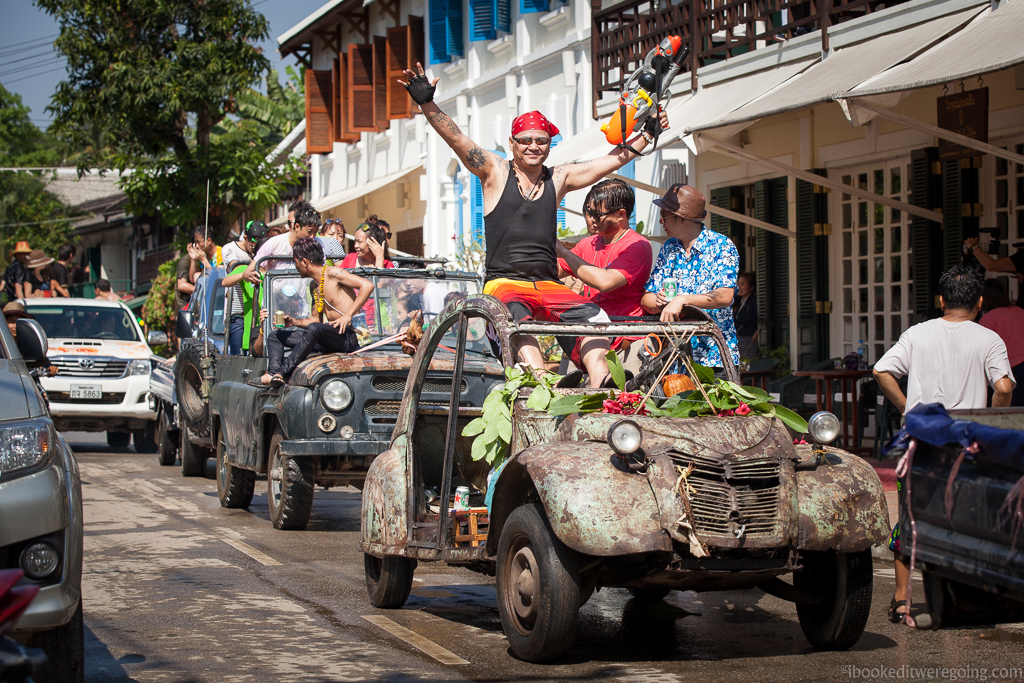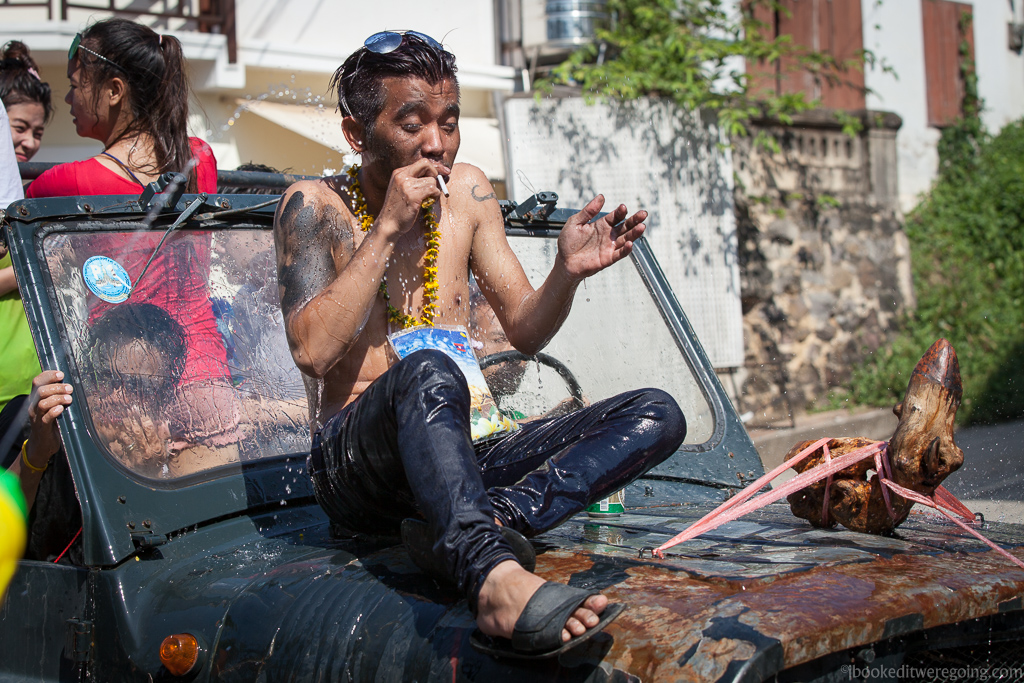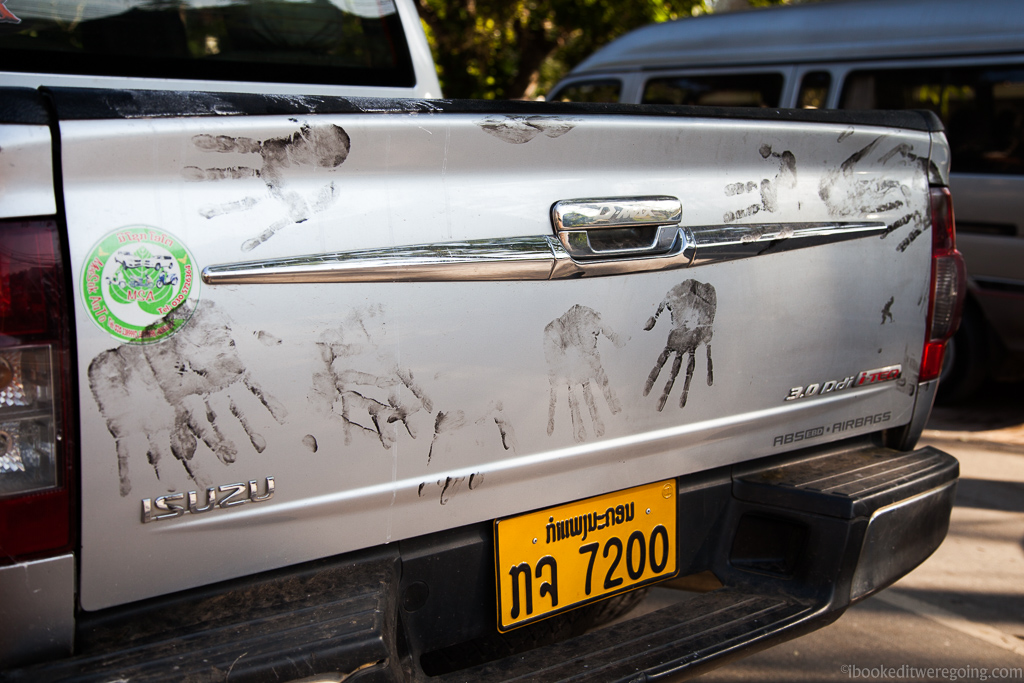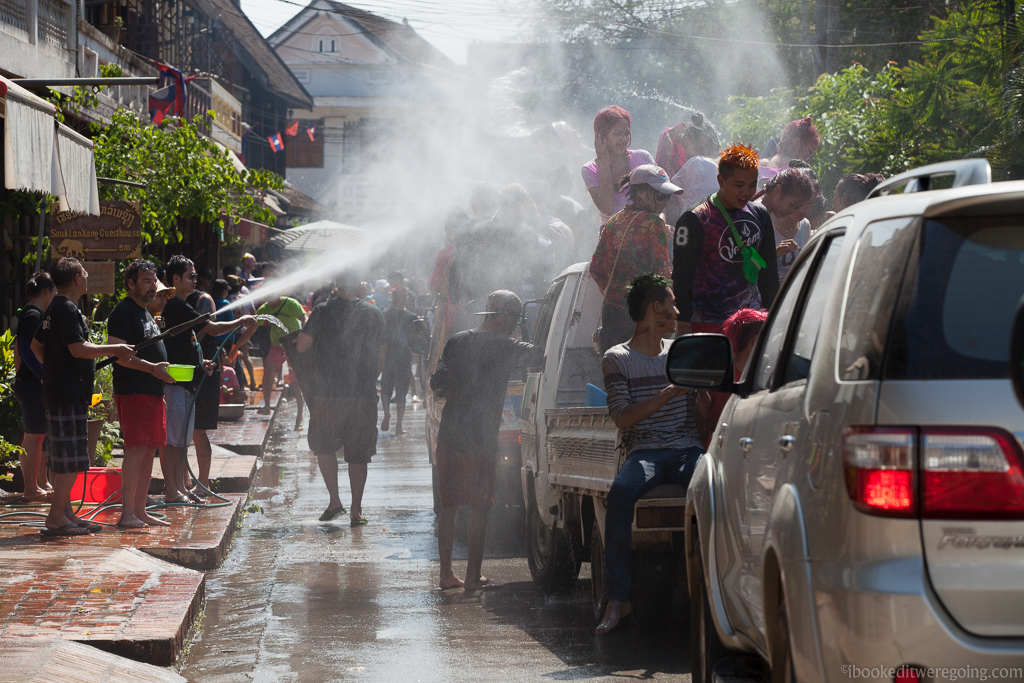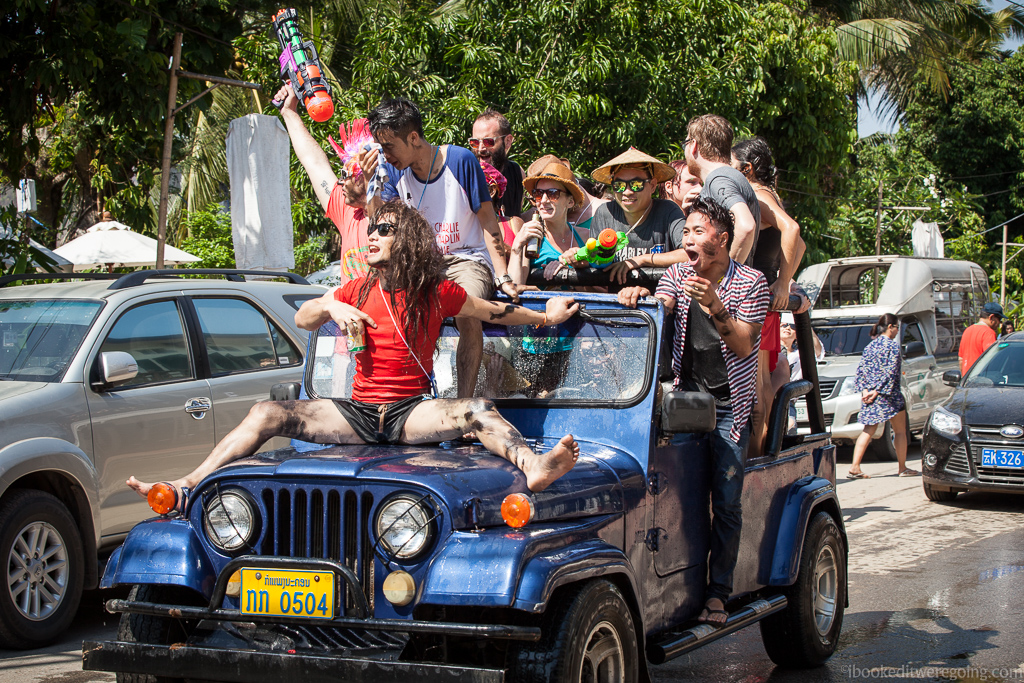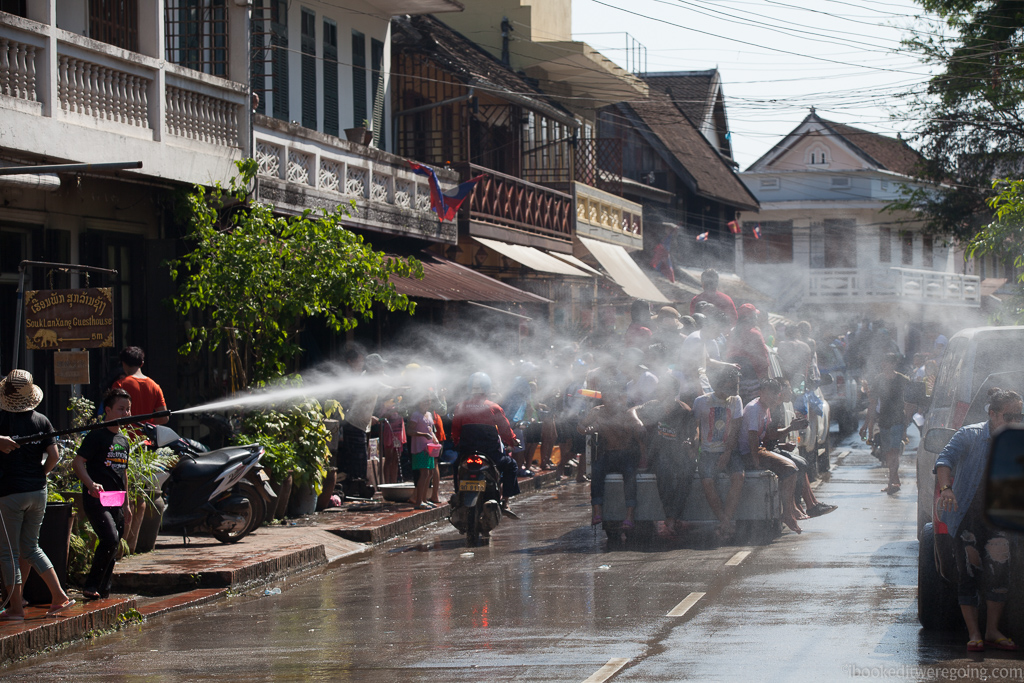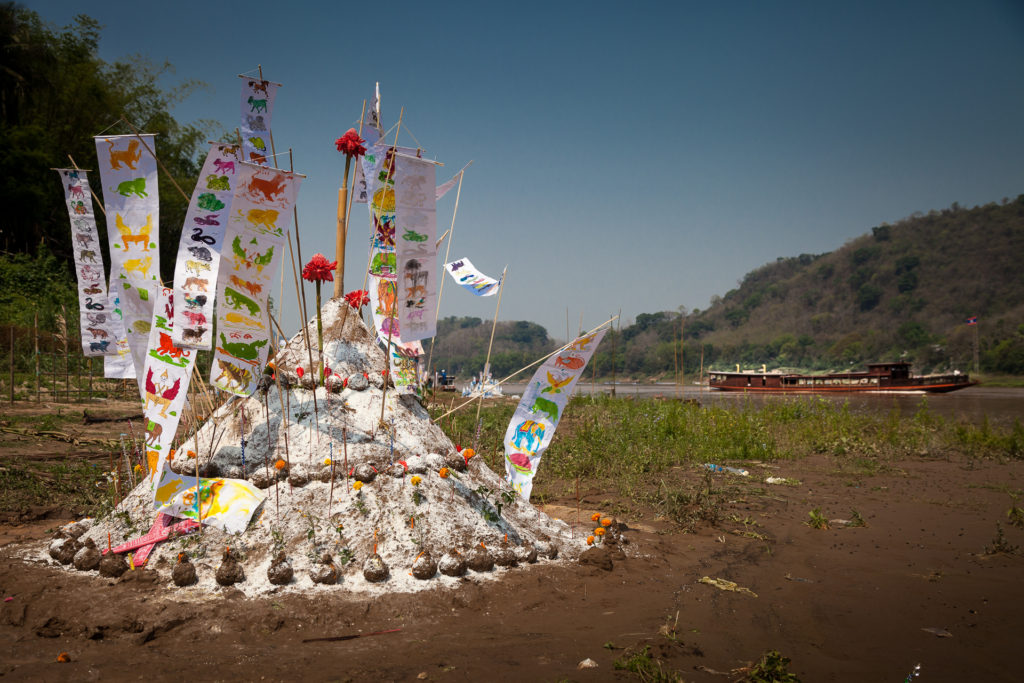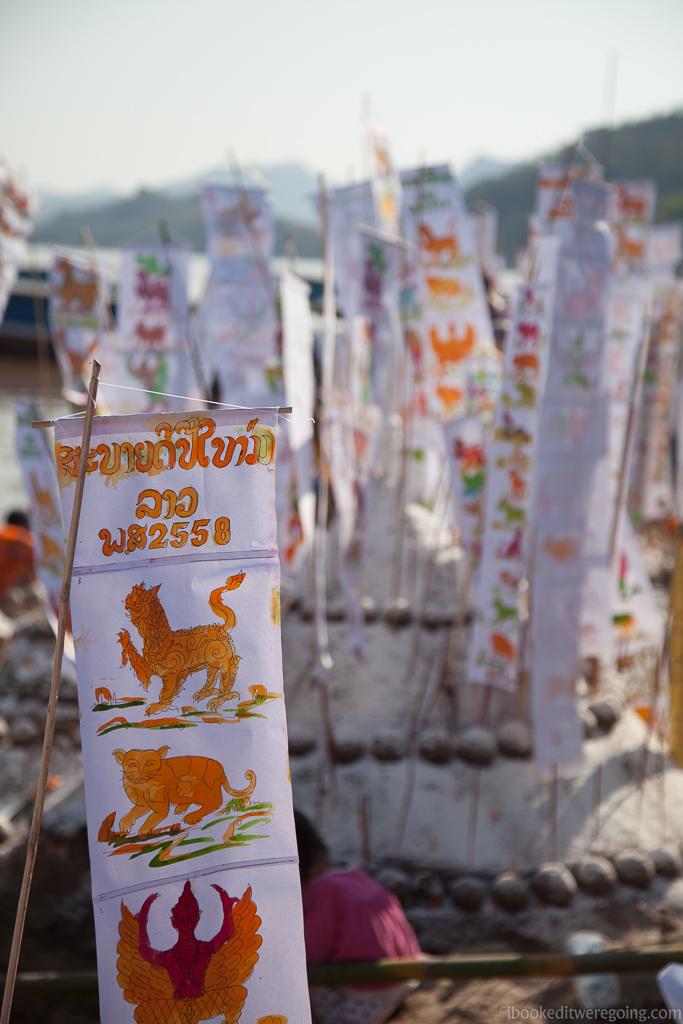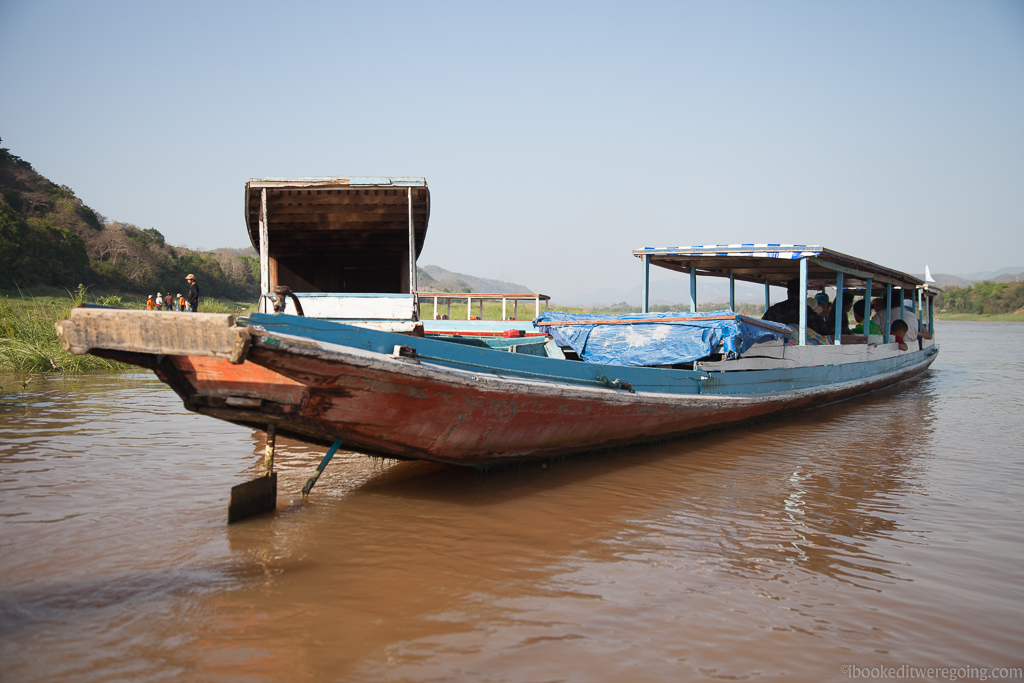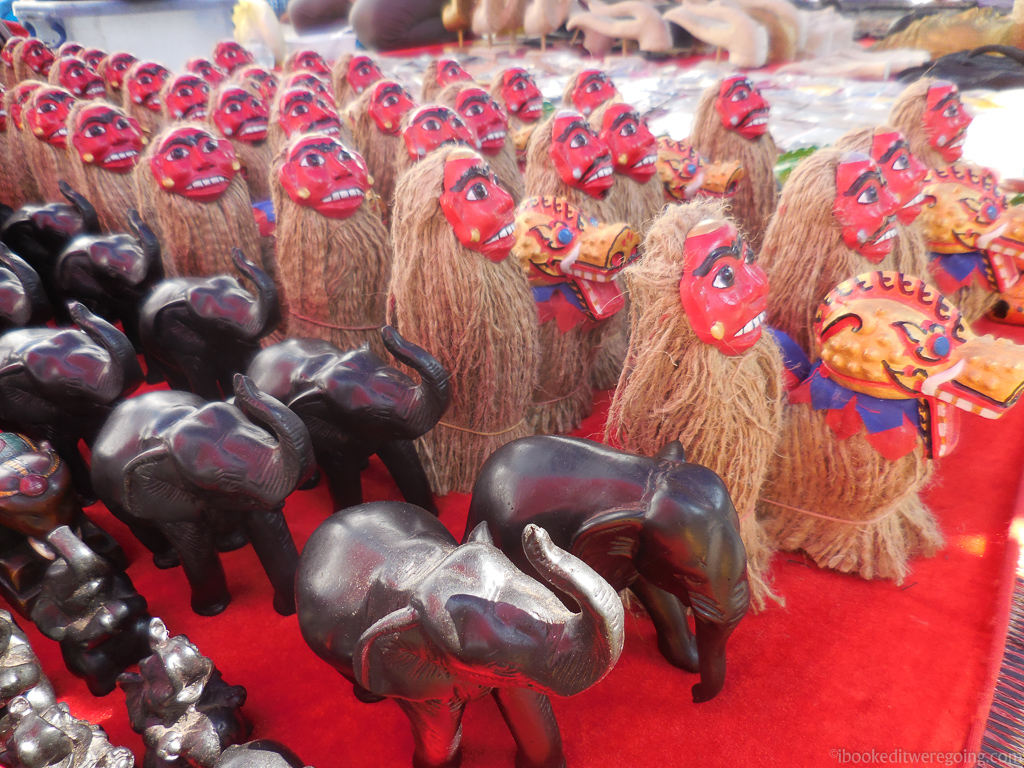Riding in the back of a tuk-tuk, we dodge airborne torrents of dirty gutter water as we zoom back into town to re-join the festivities. You see, there is a celebration going on that we hadn’t planned for. For at least three days every April, ‘Songkran’ erupts into a crazy, colourful, and very saturated spectacle, and we happen to be there with water pistols at the ready.
Awakening inside the UNESCO World Heritage township, we are roused to the echoes of a gibbon here or there in the surrounding hills. He sings his breakfast theme for us as we emerge, ready again to explore his hometown. After a few leisurely days of discovering the area and spending many hours slowing down to the pace of what Luang Prabang ultimately demands, a strange expectant feeling is starting to loom across the town. This very peaceful locale is about to erupt into a fit of revelry.
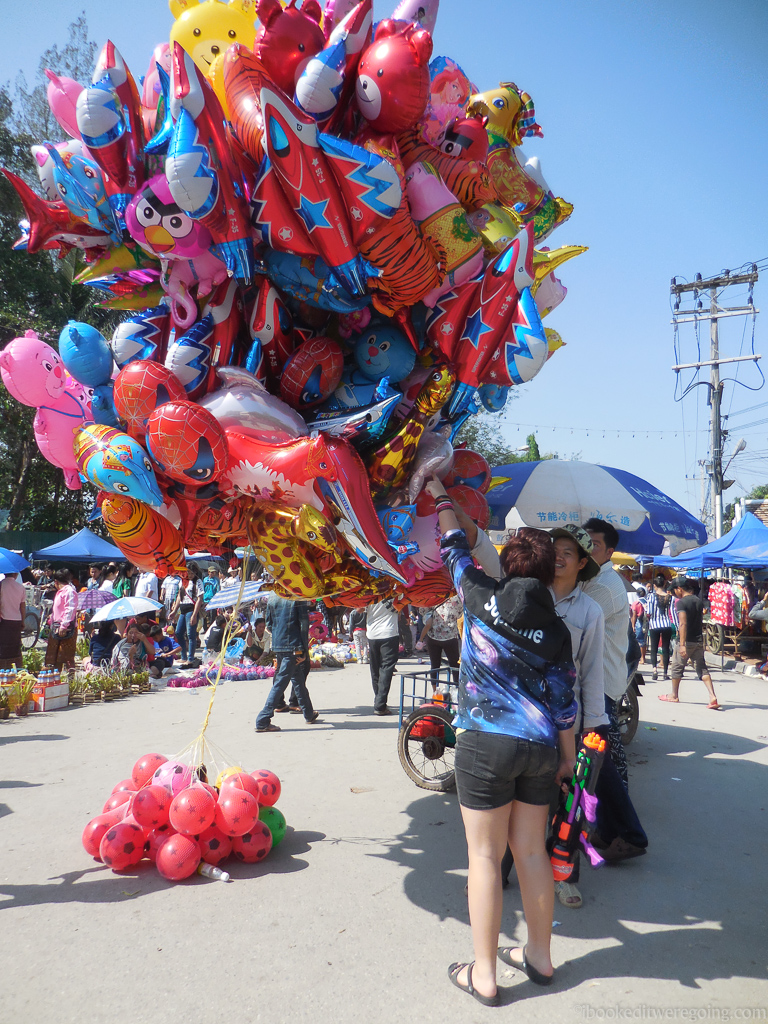
For the next three days, the streets transform into an instant carnival. Vast bunches of balloons are wafting down the road, tied to their excited sellers. Juice bars and ice cream stands have multiplied, with groups of young and old devouring the cold, tasty treats. Carnival-style games are emerging on the street, proving immensely popular to the inner gamblers, and masses of waterproof phone pouches appear in the StreetSide shops.
Along with turtles, frogs and all manner of other small creatures, teeny tiny birds housed in miniature bamboo cages are sold en masse along the streets at the base of Mount Phousi, a sacred hill located right in the middle of town. Releasing these diminutive creatures back into the natural environment shows your respect for them, and bestows you a lifetime of prosperity. This act is a win for all concerned, except for the temporary animal imprisonment involved.
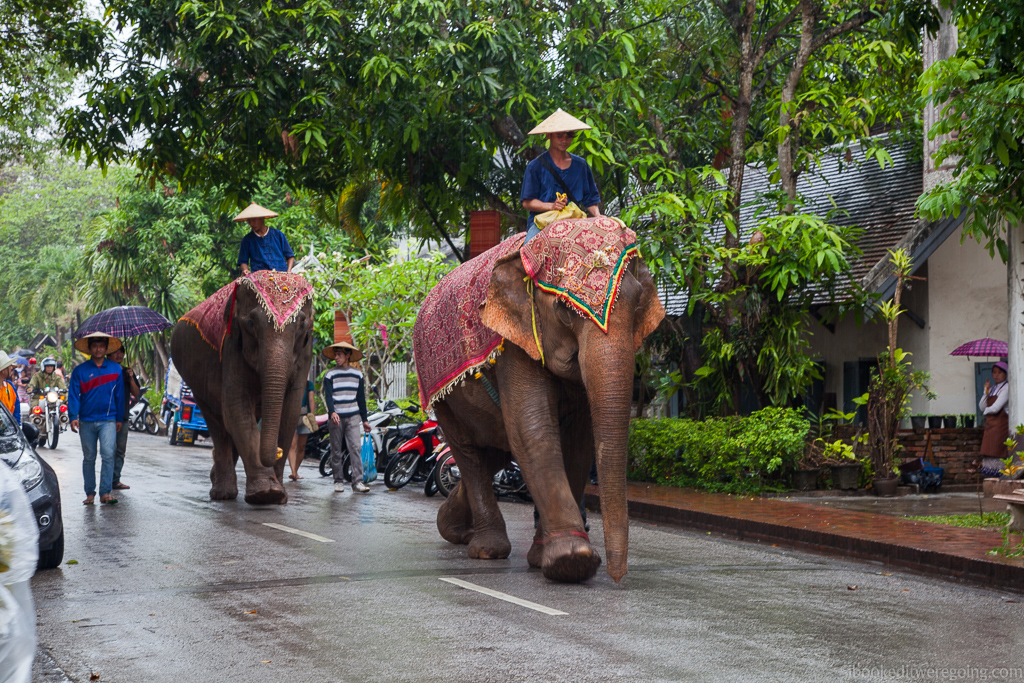
Elephants and water pistols
Costumes, parades, music and dance erupt for the next few days. A pageant of elephants marches down the main street of the old town, right past our hotel.
It is impossible to go anywhere without being drenched. Residents wait outside their abodes armed with flower-laced water buckets, ready to soak anyone who passes. Traditionally a rite of purification involving mud, soot and oil, this custom has thankfully transformed into something more amusing and joyous than having to clean oil and mud out of your hair.
After finding giant water pistols in a small roadside shop (and not realising just how much we would need them), we head a street or two over to Khem Kong. This street is what you might call the ‘Mekong Esplanade’ and is a hotspot of revelry. We watch the parade of people riding on the bonnets and roofs of enlisted cars. Heaving under the weight of the external passengers, the vehicles also spill occupants from every window. Most seem drunken with abandon and liberation, welcoming the clean slate of a brand-new year.
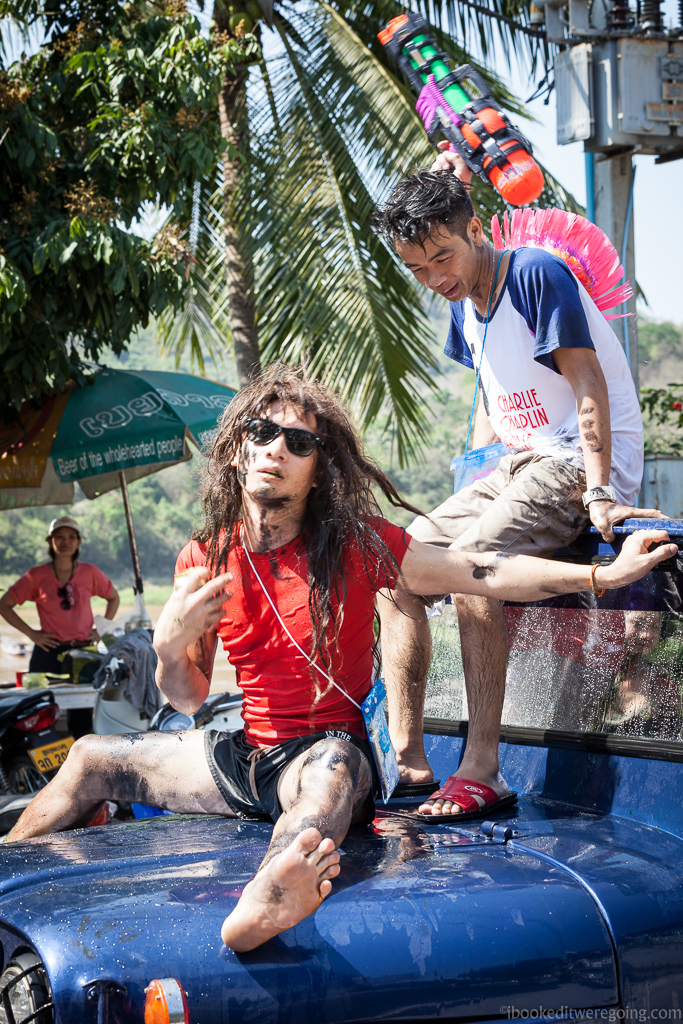
It is here on Khem Kong, and the river-side road turned temporary carnival, where we duck for cover. The locals seem to fully embrace our presence and commence their one on one assaults utilising pistols or buckets. The overarching feeling is of absolute acceptance into this spew of delight, as we are from out of town and are perfect targets.
As we hide for cover behind trees and cars, locals hunt us down, and streams of water blast us from behind. Sneaking some photos of a bucket assault about to happen further down the footpath, the reveller spies me, and within seconds the bucket’s contents are heading my way. Both of us are in fits of laughter, but there are more victims lined up, so off he trots for a refill and another target.
No one is spared from this purgative ceremony, and even travelling in and out of town we are not immune. Gleeful children wait in ambush for us to dash by on the back of an open tuk-tuk. They await with their bucket full of liquid purification – straight out of the puddle on the side of the road, and we duck, dodge, laugh and wave triumphantly at the delighted kids.
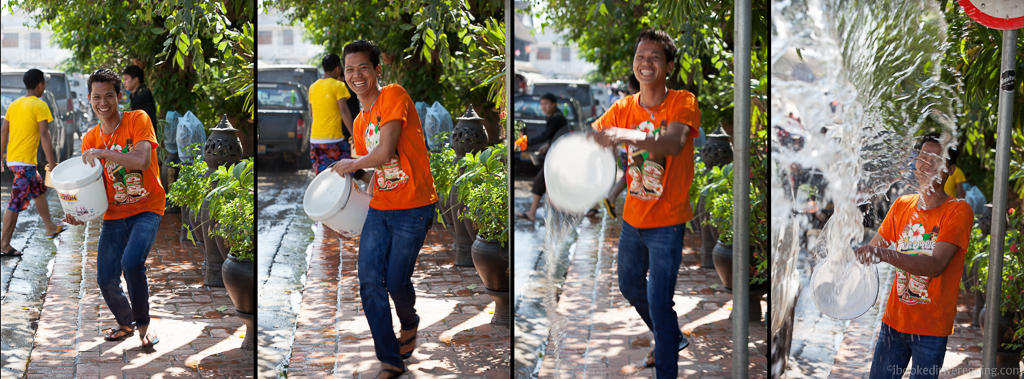
An island of sandcastles
A canoe takes us to a small island in the middle of the Mekong River, right across from the main festivities. There we join the celebrations and wander among the stupas – or Buddhist monuments – made of sand.
At this time of year, the Mekong river has receded, and its sandy banks and islands protrude further from its surface, a perfect position for the construction of the temporary Songkran stupas. The Lao belief is that every grain of sand represents an unfavourable deed from the past year. The inauspicious acts will all wash away as the river rises again with the impending wet season, while also stopping incoming evil spirits into the New Year.
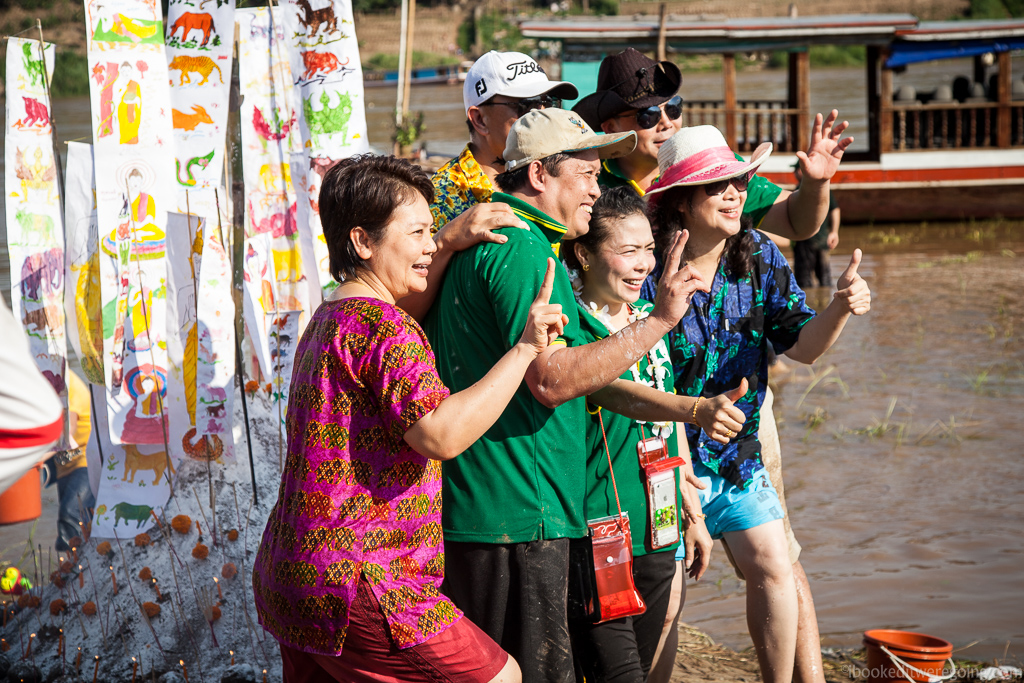
Completion of the stupas includes decorations of rice flour, mud balls, incense, candles, flowers and animal icon flags. Prayers are given, and family photos are snapped among much joy and continuing celebrations. We board a canoe for the return journey to the Old Town and head for a shower, fresh for another round of night markets and beer.
Bringing in the New Year
On day three, a giant procession marks the finale of the New Year celebrations. Dancers, musicians, community groups and floats glide along, and the parade rolls its way down Sakkaline Road through the historic part of town and right past our hotel. The winner of the beauty pageant rides serenely atop a float, adorned with brightly painted decals and a colossal sculpture of a Naga; a mythical semi-divine being, half human, half cobra.
Elephants and monks are integral to the show, and of course, everyone still has a chance of getting wet. Eventually, the mob arrives at Wat Xieng Thong, the 16th-century Buddhist temple complex of ornately decorated shrines and gardens.
We purchase a tiny bamboo cage with two minuscule twittering birds inside and climb the 400 steps to the top of Mount Phousi. Overlooking the elegant town and the mountains that embrace it, we prise open the bamboo slats and grant the birds their freedom into the fresh valley air.
As we fly out of Luang Prabang through the lush timbered mountains, I can almost hear the gibbons hooting their goodbyes. Such is the nature of this town in the Kingdom of a Million Elephants.
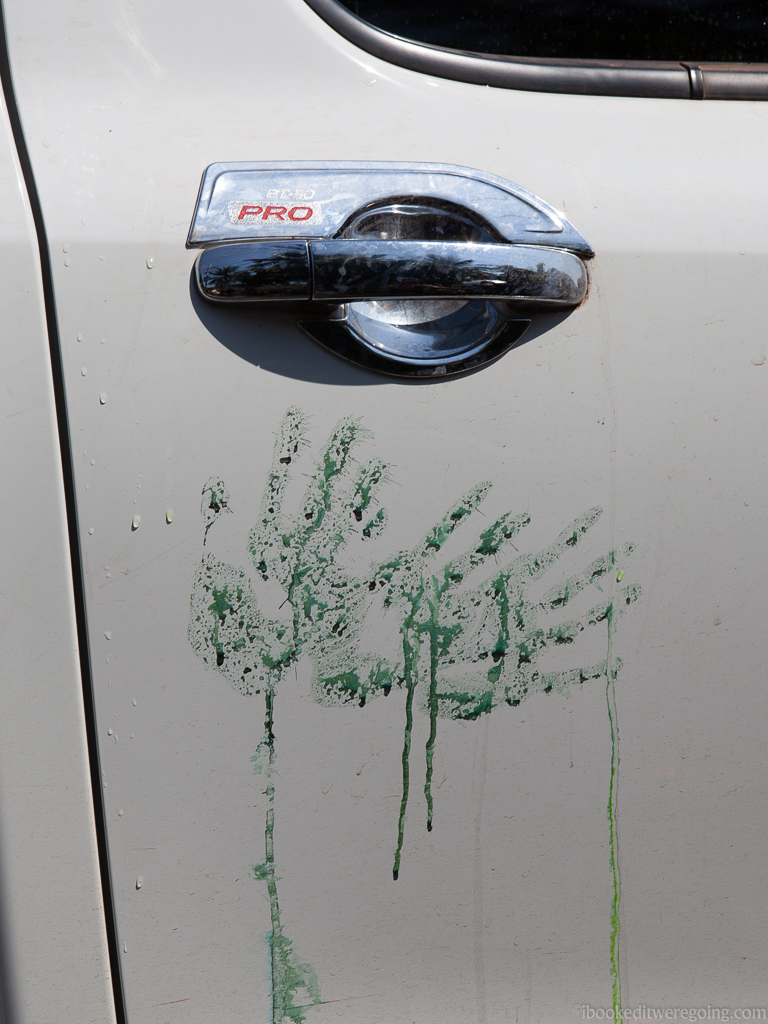
A royal settlement on the UNESCO World Heritage List
Exceptional in its fusion of Lao and French colonial architecture, Luang Prabang in the ‘Kingdom of a Million Elephants’ is historically the country’s royal and religious hub.
From the 14th to the 16th century, the town was declared the capital of the Kingdom of Laos. After a period of turmoil which divided the country into three kingdoms, 1893 saw Luang Prabang become the capital of Laos again until Vientiane took over this role in 1946.
Labelled as showing ‘Outstanding Universal Value’ due to its architectural and cultural heritage, in 1995 UNESCO declared the city a World Heritage Site.


